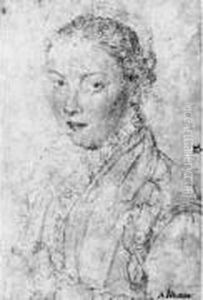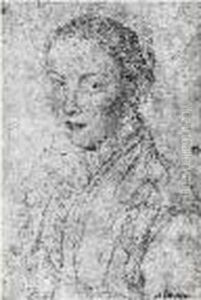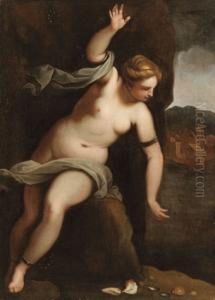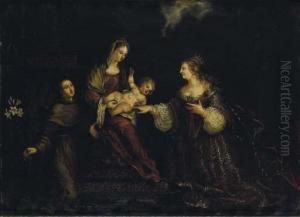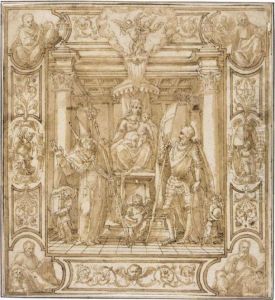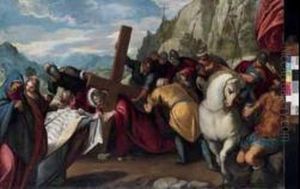Antonio Vassilacchi L'Aliense Paintings
Antonio Vassilacchi, also known by his nickname L'Aliense, was an illustrious painter of Greek descent who made a significant impact on the Venetian art scene during the late Renaissance. Born in 1556 in Milos, an island in the Aegean Sea, which was then part of the Republic of Venice, Vassilacchi moved to Venice at a young age to pursue his artistic career.
In Venice, he became a pupil of Paolo Veronese, one of the great masters of the Venetian Renaissance, and worked in his workshop. This experience had a profound influence on Vassilacchi's style, which combined the rich color palette and dramatic narratives characteristic of Venetian painting with classical forms and compositions. His nickname 'L'Aliense' derives from his Greek origin, 'Aliense' being a corruption of 'Hellenic' or 'Ellenos' in Italian.
During his career, Vassilacchi collaborated with other notable artists, including the architect and sculptor Andrea Palladio. His works often featured religious and mythological themes, and he was particularly adept at large-scale frescoes and altarpieces. Vassilacchi's paintings can be found in many churches and palaces throughout Venice and the Veneto region, demonstrating both his popularity and the high regard in which he was held by his contemporaries.
Some of his notable works include the frescoes in the Sala del Maggior Consiglio in the Doge's Palace, where he worked alongside other prominent artists such as Tintoretto and Veronese, and his paintings in the Scuola di San Giorgio degli Schiavoni. His work was characterized by clarity, controlled use of light, and a sense of harmony, which was achieved through his balanced compositions and refined color schemes.
Antonio Vassilacchi L'Aliense passed away in 1629 in Venice. His legacy lived on through his contributions to the Venetian artistic heritage, where his works continued to be admired for their elegance and mastery of the late Renaissance style.
